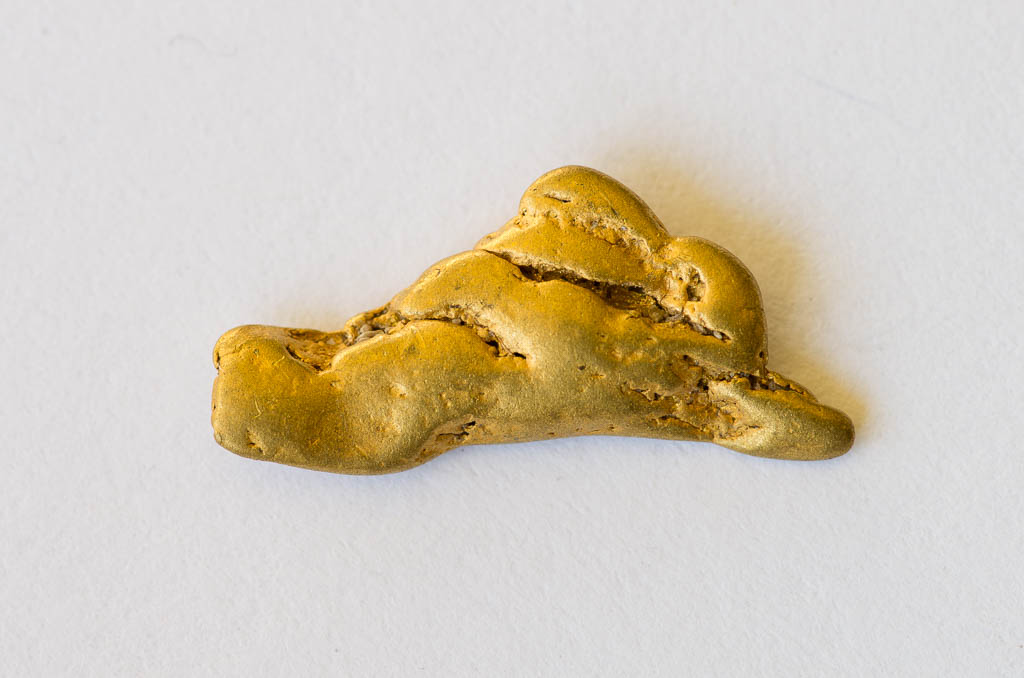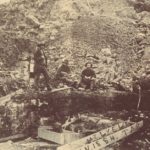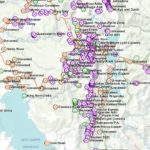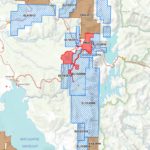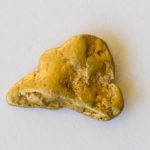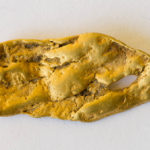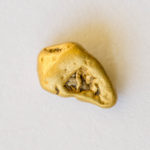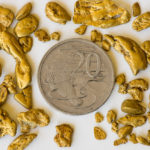The area of the West Coast Range from about Lake Margaret down to Macquarie Harbour was home to a series of gold rushes starting in the 1880s: the Queenstown goldfield.
Prospecting on the west coast of Tasmania really kicked off in earnest after James ‘Philosopher’ Smith discovered tin at Mount Bischoff. A few years later the first discovery of payable gold was made in the Corinna area in 1879. It spurred prospectors to gradually made their way down the coast prospecting the creeks and rivers. Gold in decent quantity was first found in the Queenstown area at Lynch Creek, off the Queen River, in 1881.
Rush to the Queenstown goldfield
A couple of years later, Bill and Mick McDonough and Steve Carlson found alluvial gold in creeks draining into the Linda valley, and pegged a 50-acre lease around what became known as the ‘Iron Blow’. Gold was abundant but very fine, and some have estimated that up to 25% or more of the gold was washed straight off the end of their sluices. This kicked off a significant rush, which became the Mt Lyell Gold Mining Company. It was eventually taken over by the Mt Lyell Mining and Railway Company, to mine one of the world’s great copper deposits.
In the time since gold was first discovered in the area, virtually ever creek around Queenstown has been prospected, re-prospected, and many of the re-worked again until the time of the 1930s depression. Significant finds and rushes occurred in Linda Creek, the headwaters of the Queen River, the Lake Margaret area, the King River/Newell Creek area, the Garfield River/Flannigans Flats, the Nuggety Creek area (Mt Ellen Gold Mine), Slate Spur, the Clarke Valley, and the Mount Darwin area. Mount Huxley was home to a well-publicised scam when some locals salted a mine (which was otherwise a duffer) with alluvial gold and sold the venture to mainland investors. The investors became convinced that they’d bought the biggest gold mine in the world. Prospecting and mining for alluvial gold suffered a big depression in Tasmania in the 1890s, revived at the start of the 20th century, came to a standstill during World War I, picked up again during the 1930s depression. Many unemployed men went off to fight in WWII, so prospecting came to a virtual stop again, and it never recovered in the virtually never-ending prosperity of the 2nd half of the 20th Century.
After the end of the 1930s depression, mostly only hobby prospectors have worked the Queenstown goldfield, and mostly only in easily-accessed areas.
Gold in the Queenstown area today
In my opinion, the Queenstown area offers the best alluvial prospecting in Tassie these days, if you’re prepared to get off the beaten track. I’ve personally found nuggets in several creeks I’ve prospected in the area, mostly in the 1g – 3g size range.
- Mineral occurrences in the Queenstown area
- Tenements in the Queenstown area in mid-2016.
Most of the area that is prospective for gold overlaps the belt of Cambrian volcanic rocks that the Mt Read (Rosebery) and Mt Lyell deposits are in. Creeks crossing this band of Cambrian volcanic rocks often contained alluvial gold. If you’re trying to decide where to go, the mapping engines at MRT and LISTmap are a good place to start. A few reports have been written by geologists since the time of the first rush to the Linda and King River goldfields. Some of the better ones are:
- Moore, T.B. 1883. Mr T.B. Moore’s report upon the country between Lake St. Clair and Macquarie Harbour.
- Glover, W.H. 1885. King River and Mount Lyell gold fields.
- Thureau, G. 1886. The Linda Goldfield: its auriferous and other mineral deposits.
- Montgomery, A. 1894. Notes on the Queen River and Mount Lyell mining districts.
- Twelvetrees, W.H. 1900. Report on the mineral districts of Mounts Huxley, Jukes and Darwin.
and of course:
- Bottrill, R.S. 2010. Alluvial Gold in Tasmania (Second edition).
Some reasonably sizeable nuggets have been found in the Queenstown goldfield over the years. You can see the whole list of any I have evidence for in my nugget database. Nuggets of 13 oz, 7.5 oz, 5.5 oz, 5 oz, and plenty of smaller ones have been found by prospectors. The creeks and rivers of this goldfield still have plenty to give.
- A 2.5 g nugget from the Queenstown goldfield.
- A three gram nugget from the Queenstown goldfield.
- A small gold crystal from the Queenstown goldfield.
- A lucky three days metal detecting in the Queenstown goldfield. Total = 53 g.
If you want to find gold on the west coast today, the main thing is to get off the beaten track. A good couple of hours walk can get you to a lot of creeks and rivers that haven’t been worked thoroughly on account of their remoteness. On a recent trip to the Queenstown goldfield, I found a patch where I detected 20 g of nuggets in 4 hours, and then another 30 g in a couple more days. Patches like these are still out there if you spend the time to do the research, and the effort to get to more out of the way places.
Get out there and find some of your own!
Have you found a good size nugget on the west coast? Do you have a topic you’d like me to write about, or want to leave some feedback? If you like the content at Apple Isle Prospector, feel free to get in contact, or leave a comment. If you enjoyed this article, then let others know by sharing it on Facebook or liking our Facebook or Twitter pages:

